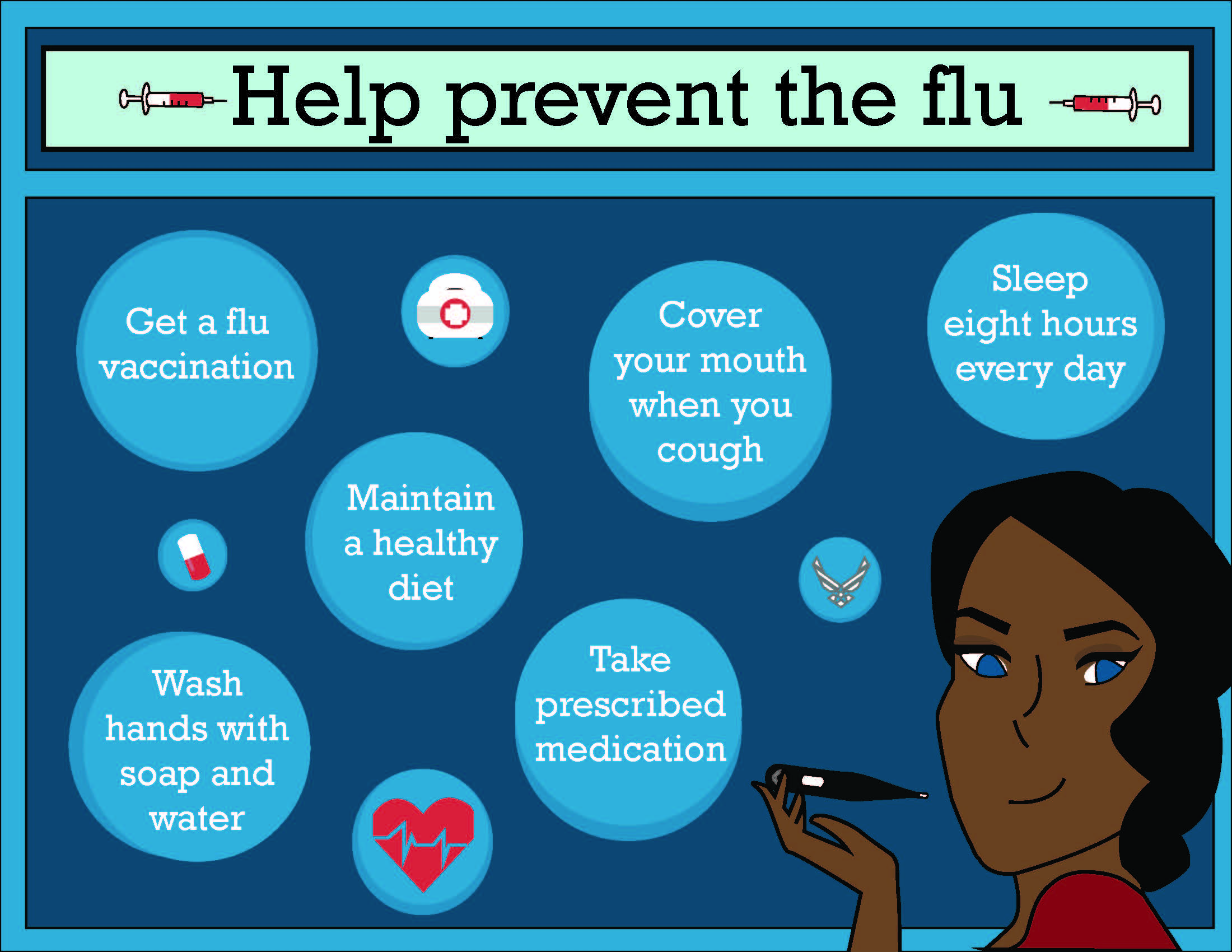Table of Contents
What do you know about the flu? What causes the flu? Are flu and common cold the same thing? How long is the flu contagious? How does flu transmit from one person to another? These are some of the questions you need to have answers to in order to stay free from infections.
Several questions pop in your mind once you hear about a particular disease. Influenza or flu is a type of respiratory illness due to the infection of a virus called influenza virus. It is an extremely transmissible disease, whose symptoms range between moderate to severe.
If you want to know how long is the flu contagious, you need to know about the virus first. Without knowing the details of the virology part, it is difficult to estimate the incubation period for the illness.
Influenza virus types
There is not one influenza virus, but four different classes- influenza A, type B, type C, and influenza D virus. Out of the three types, only types A, B, and C can infect human beings. There has been no evidence on the Type D influenza virus on infecting a human. However, the influenza D virus does hold the capability to attack human cells and cause infection.
Influenza viruses have RNA (ribonucleic acid) as their genetic material, which is the infectious part of the virus. The genetic material is the one that contains all the infection causing genes, transmitting from the virus into your cells.
All the four influenza viruses occupy the family of Orthomyxoviridae, which has seven genera in it. Do not confuse influenza virus with the parainfluenza virus that causes respiratory infections analogous to influenza. How long is the flu contagious in humans depending upon the influenza virus subtype? Read the full article to know more about the subtypes and serotypes of influenza virus.
What are the classes of the influenza virus?
Among all the other types of influenza virus, Type A is the most common form. Type A influenza virus mainly attack wild type aquatic birds as their natural hosts. Influenza viruses can easily transmit infections from poultry hosts to human hosts, causing large level influenza pandemics.
You can divide influenza virus A into various serotypes, depending on the response they produce against specific antibodies. There are two distinct proteins present on the exterior coat of the influenza virus, from where the derivation of subtypes come. The H and N letters in the serotypes of Type A virus stand for hemagglutinin and neuraminidase proteins respectively.
Hemagglutinin helps the virus to attach itself to the host cell by clumping RBCs (red blood cells) together for binding. Neuraminidase enzyme is a class of glycoside hydrolase assisting in the movement of viral particles within the host cell, followed by budding.
Common serotypes of Type A influenza virus
- H1N1: majorly responsible for causing two pandemics- Spanish flu in the year 1918 and Swine flu in the year 2009.
- H2N2: this serotype was behind the Asian flu occurring in 1957.
- H3N2: In 1968, H3N2 caused the Hong Kong flu.
- H5N1: In 2004, this serotype was responsible for causing the infamous Bird flu.
Other subtypes of influenza A virus include H1N2, H7N7, H7N3, H7N2, H7N9, H9N2, H10N7, and H6N1.
Influenza virus B is exclusively famous for infecting humans, but not that familiar like influenza virus A. The mutation rate of influenza virus Type B is two to three times lower than Type A. Type B influenza virus lacks antigenic diversity. Therefore, you can achieve acquired immunity against it a young age. However, the mutation capacity of influenza Type B is so strong that you cannot really achieve a lifetime immunity against it.
Influenza virus C has the potential to infect dogs and humans, leading to epidemics on a lower scale. It is rare compared to Type A and B of the influenza virus, which can only result in mild infections children.
Influenza virus D affects cattle and pigs, with the possibility of affecting humans as well. However, there is no proven study or case to support human infection by the Type D influenza virus.
Which signs indicate flu?
You might often get confused with the symptoms of flu and the common cold. Do both of the infections exhibit similar symptoms? How long is the flu contagious? How is it different from the incubation period of the common cold?
The development of symptoms in common cold happens at a slower pace than flu. Influenza symptoms start becoming noticeable right after the onset of the infection.
What are the symptoms of flu in infants?
How to know if your child is suffering from common cold or flu? There are a few pointers to know if your child has flu:
Normal symptoms of experiencing fever and sore throat will persist in case of flu. However, other signs to look for in case of further complications include-
- Resistance in your child from drinking enough quantities of water or other fluids throughout the day.
- No shedding of tears every time your child cries. This is a warning sign of severe dehydration.
- No intention to eat anything.
- Having high body temperature along with soreness and rashes.
- Not having proper sleep or waking up and interacting with anyone.
- Facing problem in urinating.
It can be immensely confusing in differentiating flu from a common cold in children, as the signs are quite akin. You need to look for the time when symptoms start appearing, which is mostly quicker in the case of flu.
If your kid is not experiencing high fever or any other serious flu symptoms, then it is probably a common cold. How long is the flu contagious for your child? In case of any confusion, feel free to contact a pediatrician for medical advice and correct diagnosis of the illness.
What are the early signs of the flu?
Some of the symptoms that appear in the early stages of influenza infection are:
Fatigue
It is one of the primary signs of the flu. Do not confuse fatigue with normal tiredness. The type of lethargy that you normally experience after coming back home from work is very different from extreme fatigue.
You may experience fatigue during the common cold as well. However, with flu the signs are extreme. Taking long hours of rest by staying back at home can improve your immune levels and strengthen your body.
Sudden chills and body aches with fever
If you have flu, having pain and chills in your body is quite common. You will mostly experience soreness in your head, legs, and back.
Chills can give rise to high fever. If you have a fever beyond 100.4° F, then it is indicative of flu. However, having a fever is a good sign. It means your body is preparing itself to fight back the pathogen causing the infection.
Doctors will mostly recommend medications like ibuprofen and acetaminophen to bring down your fever. Remember that these medicines are not for curing the influenza virus.
Cough
If you are experiencing continuous dry coughs, it can be a potential symptom of flu. Influenza virus will also cause pain in your chest every time you cough, along with wheezing. Your coughs will mostly contain mucus or phlegm, with rare scenarios of blood as well.
Immediately call for doctor’s help if you are a patient of emphysema, asthma or other respiratory complications. Experiencing flu with such respiratory disorders can prove to be quite dangerous if not taken seriously.
Sore throat
Having soreness and itchiness in your throat is a usual sign that you have flu. Coughs associated with flu often come along with swollen and sore throat. In the initial stages of the influenza infection, you will feel a bit of scratchiness. While drinking water or juices, you will have a weird sensation as if something is stuck in your throat.
If your sore throat persists, it is most likely for the infection to progress to other areas of your body.
What are the dangerous symptoms of the flu?
Always know that flu is a type of viral illness with the potential to progress very fast. The symptoms will keep worsening with time rather than getting better if there no right diagnosis at the right time. How long is the flu contagious? The transmissible potential of flu keeps increasing with time when the symptoms start getting severe.
Do not compare your tolerance rate of flu with anyone else. Not everyone reacts in the same way to the infections of the influenza virus. The extent of resistance or progression largely depends on your age, immune level, and overall health.
Immediately seek the help of a doctor if you come across any of the below severe symptoms of influenza-
- Extreme pain in the chest
- The coloration of your lips changing to pale blue
- Serious dehydration
- Difficulty in breathing or respiring properly
- A persistent cough that keeps getting ugly each day, followed with blood coughs
- A constant state of confusion and dizziness
- High fever with recurrent intervals
What are the associated complications?
Usually, the symptoms of influenza should start to fade within one or two weeks. However, there are chances of additional health problems developing because of persistent flu. The risk factor increases if you are already a victim of a weakened immune system or any other health impediments.
Some of the flu-related health threats include-
- Bronchitis
- Infection in ear
- Pneumonia
- Sinusitis
- Encephalitis
Can flu cause problems of the GI tract?
During the early phase of the flu, the infection can spread beyond your throat making way towards the gastrointestinal tract. After affecting your head, chest, and throat, the virus messes with your digestive processes resulting in GI complications. The possible symptoms include severe pain in the stomach, nausea, vomiting, and diarrhea.
Due to acute vomiting and diarrhea, you can come across a very serious health risk of dehydration. To avoid lack of fluids in your body, keep yourself hydrated by drinking ample amount of water and sports drinks. You go for options like fruit juices without added sugar, broths, and soups and caffeine-free beverages.
What are the growth and transmissible period?
Do you know anything about how long is the flu contagious? What is the normal incubation time for the influenza virus? Generally, the gestation period for flu lies between 1-4 days. The development of the influenza virus inside your body varies from one person to another.
Typically if you have to assess that how long is the flu contagious, it will be two days. Once you expose yourself to the influenza virus, it will usually require two days for the symptoms to develop. The progression of flu is rapid than the common cold, which on average takes a minimum of three days for symptom development.
If you are thinking about how long is the flu contagious, there are several factors influencing the gestation period like:
- Infectious dose- The dose refers to the viral load with which you have come in contact. If a greater percentage of the virus has affected you, it can considerably lessen the incubation time. Therefore, the infectious dose is inversely proportional to the gestation period of the virus.
- Infection pathway- The route of viral infection decides the intensity of the incubation cycle. There are different entry points and passages of the virus inside your body, which influences the effectiveness of the infection.
- Preexisting immune levels- Memory cells of your immune system have an essential role to play in regulating the incubation period of the virus. If you have experienced flu before in your life, you probably have antibodies ready in your immune system. This will make it easier for your body to fight the infection in lesser time, thereby lessening the development period.
Precautions for flu
Transmission of flu mainly happens when you come in direct contact with sneezes or respiratory droplets from infected individuals. Being in a crowded area where an infected person sneezes or coughs makes it risky for you to catch flu.
You may even get the influenza virus from touching surfaces like doorknobs, benches or chairs. To reduce risks of influenza, you should take a few preventive measures. Wash your hands rigorously with lukewarm water and soap after sneezing or coughing. Be at home if you have a fever. Always cover your mouth while coughing and sneezing.



